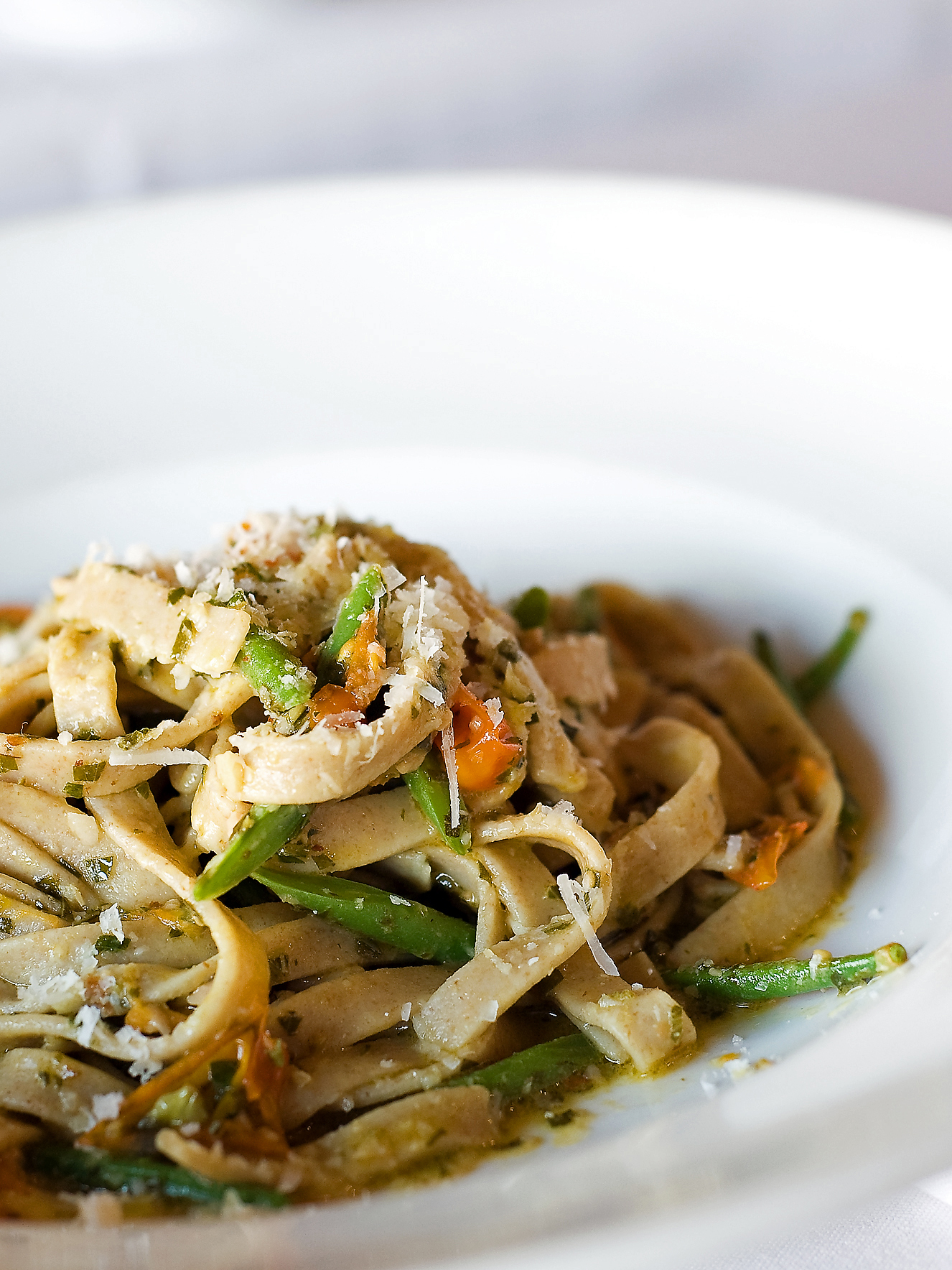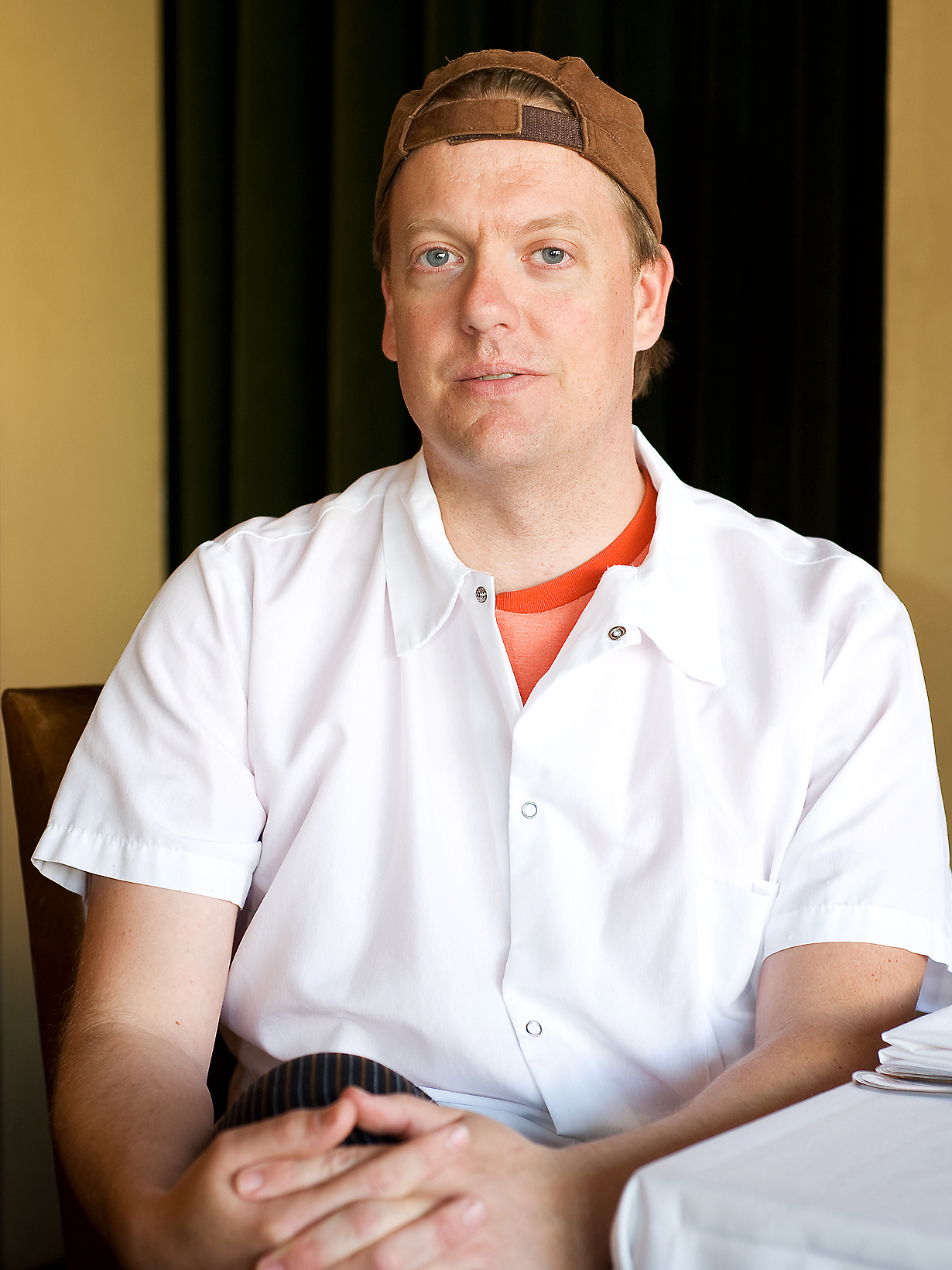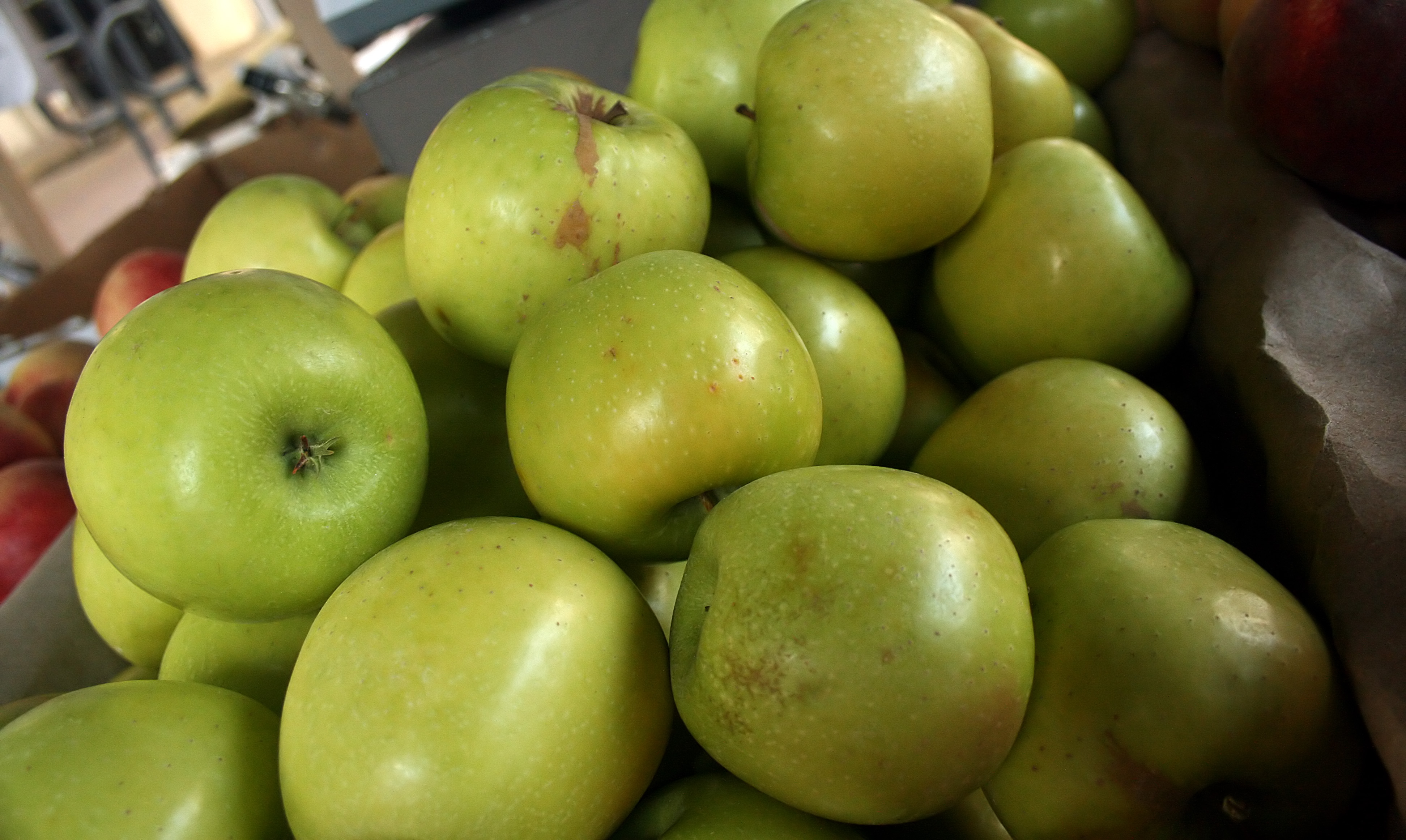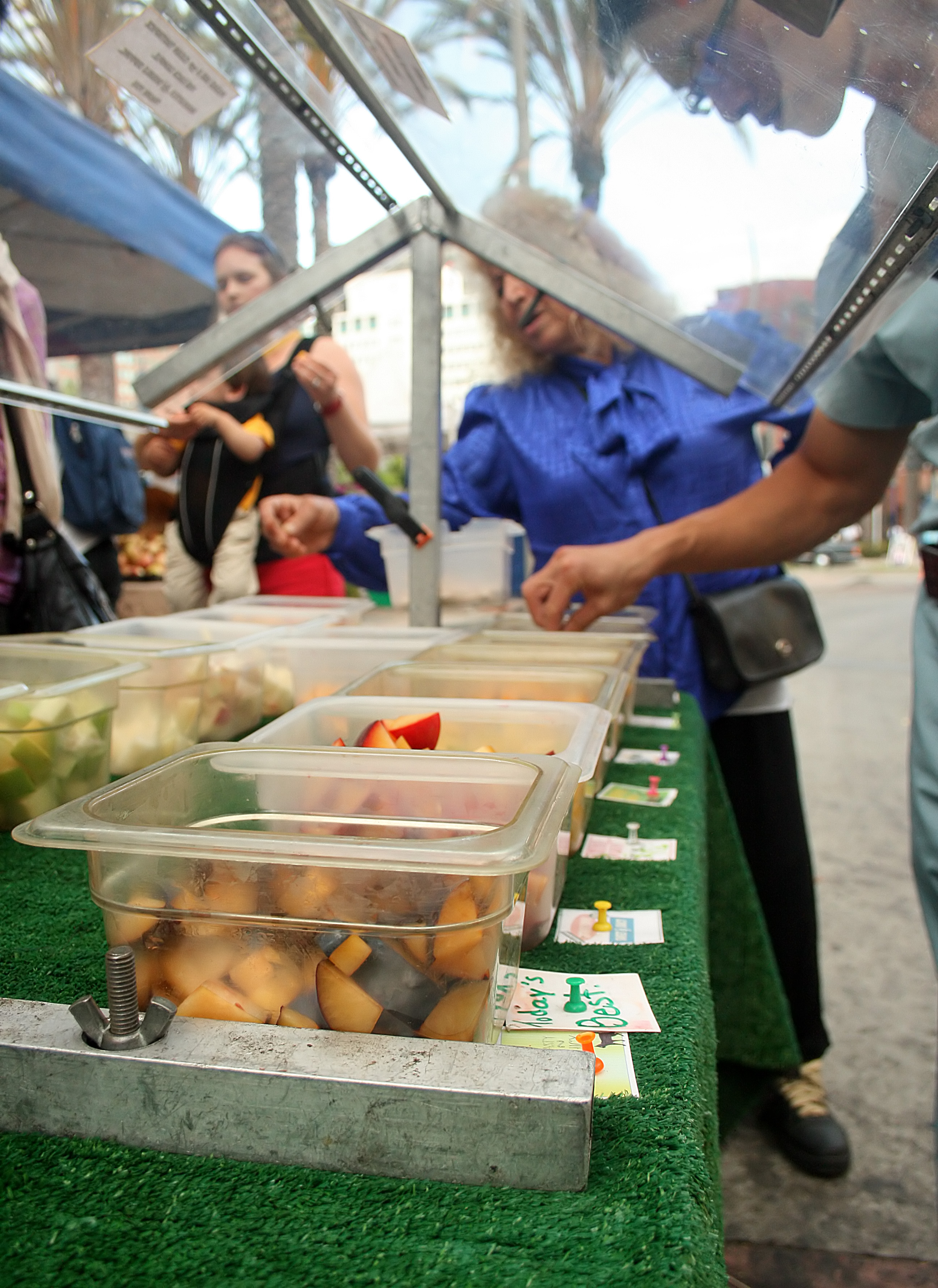

from top to bottom: Organic apples wait to be bought at the farmers market; Passersby try more than a dozen samples of organic, locally grown fruit during the weekly Westwood Farmers Market; Chef Mattern mainly buys locally grown produce for his dishes; Chef Daniel Mattern found his niche at Ammo Restaurant after meeting general manager Benedikt Bohm at a farmers market.

Millions of years of evolution has led to the creation of herbivores, carnivores and omnivores. Locavores ““ people who eat food grown and harvested within a 100 miles of their home ““ have emerged only recently.
When food travels such a short distance, locavores argue, it can taste fresher, support local economies and cut down on carbon emissions. That means less shopping at Ralphs and Trader Joe’s, more shopping at farmers markets.
Julia Brown, a first-year pre-medicine student, notices a big difference in quality and researched online for nearby farmers markets.
“I just really like farmers markets in general. It’s a different experience than going to a grocery store. It’s more fresh,” Brown said.
Despite the challenges, support for local foods has only grown.
U.S. consumers spent just $4 billion on locally grown produce in 2002, but the total is expected to reach $7 billion by 2011, according to the Worldwatch Institute.
The UCLA community has experienced this with the 2009 opening of the Westwood Farmers Market on Broxton Avenue. For most students, they go as much for the experience of interacting with other market-goers as they do for the produce.
“You feel more connected to the people around you,” said Anna Reutinger, a second-year Design | Media Arts student.
Reutinger helped design the Green Guide to Sustainable Living at UCLA, given this quarter to all students living on campus, which includes a map of farmers markets in West Los Angeles.
“There’s no real common ground where people can get together and just be a community,” Reutinger said.
Outside of campus and the farmers market, it’s easy to feel disconnected amongst the high-rise apartments, she said.
Cha Moua, owner of Moua Family Farm, comes every week to the Westwood farmers market and supports UCLA’s struggling students.
“We’ll try to give them a little discount. Because I was a student myself, so I know how hard it is. I do it all the time,” Moua said.
Outside of the basil, carrots and other produce found at many L.A. farmers market stalls, Moua sells vegetables used in traditional East Asian cooking. Opo squash is offered for $1.50 a pound, Chinese broccoli for $2 a pound.
Ninh Le, a fourth-year mechanical engineering student, visits Moua’s stall because she can buy ingredients that remind her of her home in Vietnam. On her walk back from class, she bought bitter melon to make a soup and raw peanuts to boil for a snack.
Joining students at these markets are some of the city’s most distinguished chefs. Chef Daniel Mattern of Ammo Restaurant buys 90-95 percent of the restaurant’s produce from farmers markets and has maintained the level of quality that recently led to a three-star review from Los Angeles Times critic S. Irene Virbila.
Mattern came to Ammo through general manager Benedikt Bohm, whom he met years ago at a farmers market. Those in the restaurant business often chat in the back of a truck or next to a stall and introduce each other, he said.
But beyond camaraderie and community, supporting local businesses and helping the environment, most consumers just want to buy food that tastes good. And at Ammo, where the labor of local farmers meets the work of a local chef, a salad of heirloom tomatoes with green olives, preserved lemon, fresh garbanzo beans and feta is bright and bold. The tomatoes are juicy and sweet where supermarket tomatoes might be dry and bland.
Back in the final hour of the Westwood farmers market, Kirk Blizzard of Los Angeles County’s Tenerelli Orchards held a peach beneath a student’s nose.
“You can smell it,” Blizzard said. “It’s a real peach, you know? It’s like walking out in your backyard and taking it off the tree. See now? That’s a peach.”
The customer, smiling, thanked Blizzard and walked off with his bag of peaches, perhaps evolving into another L.A. locavore.
